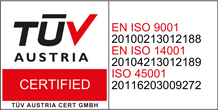Hazardous and toxic waste from households
Over the year, every household generates a number of toxic substances that pose a risk to human health and the environment. They include waste batteries, oils, paints, varnishes, solvents, medicines, pesticides, various chemicals etc. This type of waste has to be collected separately.
Depending on type, hazardous and toxic waste can be deposited at:
Make sure to always deposit different types of hazardous waste separately (mixing up different types of waste is not permitted).
- Did you know that 1 litre of motor oil can contaminate 1 million litres of drinking water?
- Did you know that 1 litre of waste oil released into water has the same negative impact as the amount of waste generated by a town with 40,000 inhabitants?
- Did you know that waste food oil can be used (e.g. in biodiesel production), eliminating water contamination and wastewater treatment costs completely?
- Do you know that stove, oven and grill cleaners can contain lye and organic solvents and must not be poured down the drain or thrown away with the rest of your household trash?
- Did you know that chemical floor and furniture polishers can contain organic solvents and aromatic hydrocarbons?
- Did you know that batteries and accumulators can contain heavy metals that are a direct threat to the environment and to human health (mercury is a strong nerve agent, for instance, and cadmium can cause liver, lung and bone damage)?
- Did you know that stain removers can contain chlorinated hydrocarbons (the smallest bottle of this liquid is enough to contaminate a million litres of drinking water)?
Depending on type, hazardous and toxic waste can be deposited at:
- Specialized stores (accumulator stores, pharmacies, stores that have waste battery bins, etc)
- Recycling centres, mobile recycling centres or
- Companies specializing in hazardous waste collection.
Make sure to always deposit different types of hazardous waste separately (mixing up different types of waste is not permitted).





